Products

Raisin
The history of raisin: The raisin was discovered accidentally, many years before Christ. People ate grapes but did not know that if they were to dry the grape, it would become this useful and delicious dried fruit called the raisin. Historians claim that the Phoenicians and Armenians were the first nations to produce raisins. Phoenicians established vineyards in Spain and Greece that were fitting for cultivating raisins and the Armenians established their vineyards in Iran, Turkey and Iraq. The Greeks and Romans had a high demand for raisins and then other countries started to use raisins as well
Paste
Origin
이란
Production Capacity
10,000 /
Export Volume
8,000 /
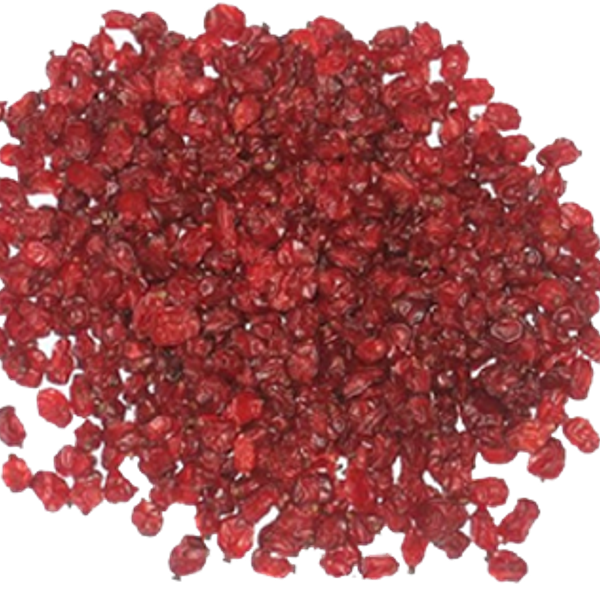
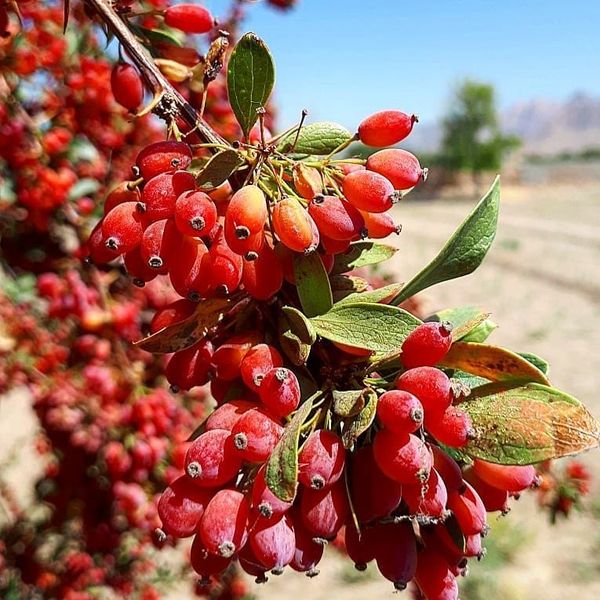
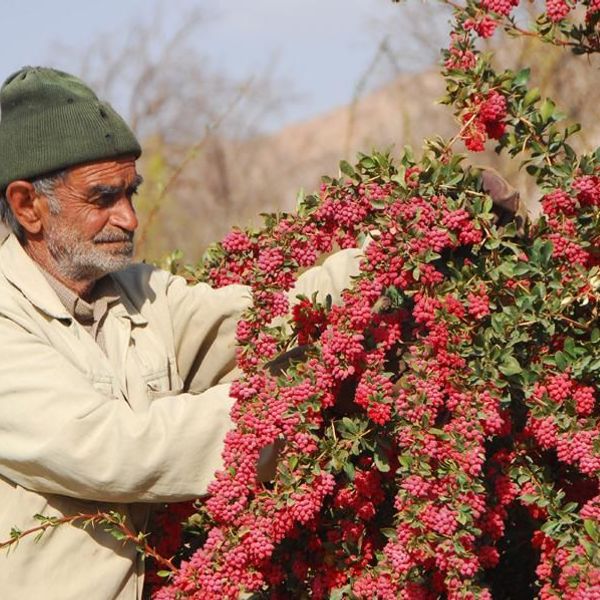
Barberry
Barberry
Barberry (Zereshk) is a genus of about 450-500 species of deciduous and evergreen shrubs from 1–5 m tall with thorny shoots, found throughout the temperate and subtropical regions of the world Species diversity is greatest in South America, Africa and Asia. These little red jewels are incredibly useful things to have in the store cupboard - sprinkle them on to a dish of rice or couscous or strew over pot-roasted chicken, and they'll bring a burst of gorgeous color and an explosion of tart flavor.
Iran has got special potential in preparing Barberries and exporting it to many countries. Barberries are consumed in various cuisines including Spanish, French, Russian food. In Iran a type of Special food is eaten adding Barberries on the Rice.
Barberry Shiny Red This type of Barberry which is also known as Barberry Dane Anari is most popular for its competitive price. Their Moisture level of Barberry Shiny Red is between 15-17%. Their rate of moisture affects their perceivable levels. They are mainly from the northeastern provinces of Iran to be exact North Khorasan and Razavi Khorasan in cities such as Birjand.
Customers demand Barberry Shiny Red because of its prices and how fresh it is at the beginning of the season. the color of this type of barberry is dark crimson and its shape is different from puffy type in a way that is less puffy and flatter. in other words, each shiny red berry has less volume than puffy barberry.
Barberry Puffy This type of Barberry which is also known as Barberry Pofaki is most popular for its color and form. Since it is dried on the tree it gets Puffy. Their Moisture level of Barberry Puffy is between 12-14%. Their rate of moisture affects their perceivable levels. They are mainly from the northeastern provinces of Iran to be exact North Khorasan and Razavi Khorasan in cities such as Birjand.
Customers demand Barberry Puffy because of its color, which is shiny, live, fresh, and bright Red. The appearance of this barberry is better than the other types of barberry. Another reason why customers demand this barberry is the high volume of its production.
Barberry (Zereshk) is a genus of about 450-500 species of deciduous and evergreen shrubs from 1–5 m tall with thorny shoots, found throughout the temperate and subtropical regions of the world Species diversity is greatest in South America, Africa and Asia. These little red jewels are incredibly useful things to have in the store cupboard - sprinkle them on to a dish of rice or couscous or strew over pot-roasted chicken, and they'll bring a burst of gorgeous color and an explosion of tart flavor.
Iran has got special potential in preparing Barberries and exporting it to many countries. Barberries are consumed in various cuisines including Spanish, French, Russian food. In Iran a type of Special food is eaten adding Barberries on the Rice.
Barberry Shiny Red This type of Barberry which is also known as Barberry Dane Anari is most popular for its competitive price. Their Moisture level of Barberry Shiny Red is between 15-17%. Their rate of moisture affects their perceivable levels. They are mainly from the northeastern provinces of Iran to be exact North Khorasan and Razavi Khorasan in cities such as Birjand.
Customers demand Barberry Shiny Red because of its prices and how fresh it is at the beginning of the season. the color of this type of barberry is dark crimson and its shape is different from puffy type in a way that is less puffy and flatter. in other words, each shiny red berry has less volume than puffy barberry.
Barberry Puffy This type of Barberry which is also known as Barberry Pofaki is most popular for its color and form. Since it is dried on the tree it gets Puffy. Their Moisture level of Barberry Puffy is between 12-14%. Their rate of moisture affects their perceivable levels. They are mainly from the northeastern provinces of Iran to be exact North Khorasan and Razavi Khorasan in cities such as Birjand.
Customers demand Barberry Puffy because of its color, which is shiny, live, fresh, and bright Red. The appearance of this barberry is better than the other types of barberry. Another reason why customers demand this barberry is the high volume of its production.
Jute Sack (Jute Bags), Tub, Mesh Bags, Carton Box, Plastic Punnets
Organic, Non-GMO, Conventional
Halves, Segments, Chunks, Whole
Origin
이란
Production Capacity
5,000 /
+ 1
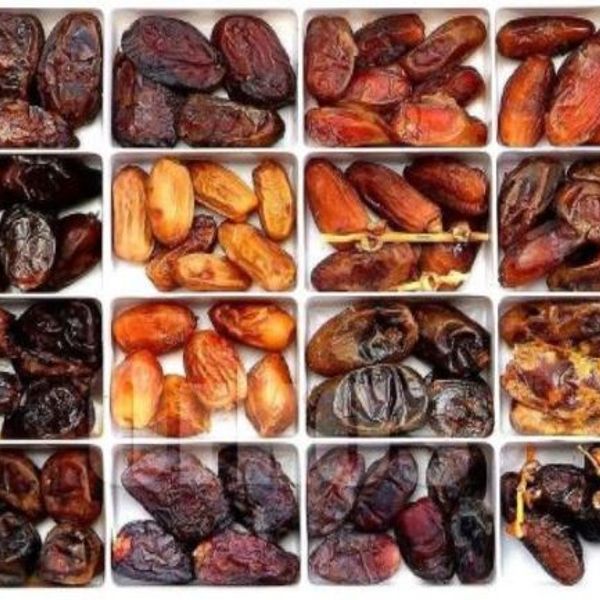
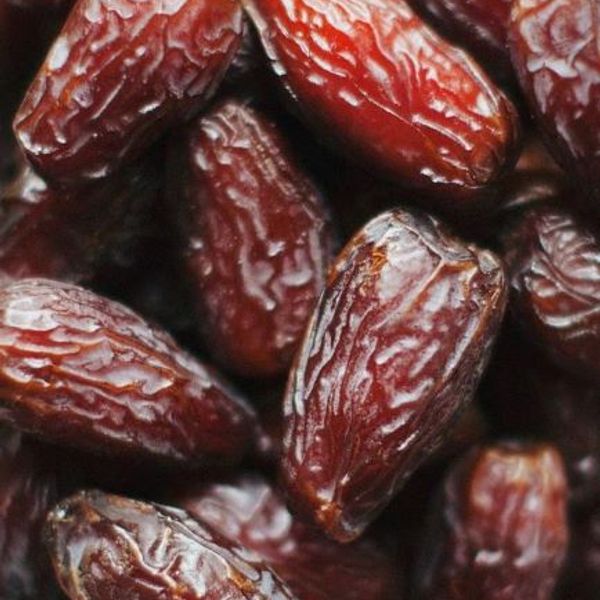
Date
Date
Dates is a heavenly fruit and very nutritious that contains many different minerals including iron, potassium, zinc, manganese, and vitamins A, B, and E. Research has shown that this fruit can prevent cancers of colon, stomach, etc. One of the important traits of dates is that it is emollient. 6 to 7 on them must be soaked 2 glasses of boiling water and consumed every morning and evening while it is still warm; or some dates to be consumed and immediately one or 2 glasses of warm water to be drank after it. Dates can also be eaten as a fruit.
Piarom DateThis date is also known as Piyarom date or Maryami (Myriam) date. This date is the most expensive and luxurious Semi Dried date. Their moisture level of Piarom Date is below 15%. The moisture level depends on the harvest time, the location of cultivation and irrigation. Farmers grow this date mostly in southern Iran provinces such as Hormozgan, Hajiabad and etc.
Mazafati Date (Mozafati Date, Bam Date) is a fresh date fruit with moisture level between 20-25%. The moisture level depends on the harvest time, the location of cultivation and irrigation. Farmers grow this date mostly in southern Iran provinces such as Bam and area around it like, Jiroft Bora and Narmashir and other areas in Kerman Province.
Sayer DateThis type of dates are the most popular ones among dates for export. They are mainly from southern provinces of Iran. Customers demand Sayer Date (Semi Dried) because of its taste and usage. Their medium rate of moisture, affects their perceivable levels. what makes Sayer Dates to have high demands is the how easily the the seed can be separated. The color of these dates range from brownish to orange-ish.
Kabkab Date This date is in the category of Semi Dried dates. Their moisture level of kabkab date is between 15-18%. The moisture level depends on the harvest time, the location of cultivation and irrigation. Farmers grow this date mostly in southern Iran provinces such as Bushehr, Borazjoon and Dashtestan.
Zahedi Dates (Zahidi Date) are considered a dried date with moisture under 12%. This Date is mostly grown in Southern Provinces of Iran, mostly in Posht-e Kuh, Hormozgan and Bushehr Province. The weather in Southern provinces of Iran is mostly hot which makes it perfect for date palm trees. The harvest time is in late September until mid-October.
Rabbi Date These types of dates are most popular for their taste and their moisture level. Their Moisture level of Rabbi Date is approximately 12% and that`s why Rabbi Sates are categorized as Dried Date. Their low rate of moisture affects their perceivable levels. They are mainly from the east-southern provinces of Iran such as Sistan and Baluchestan province, in cities such as Zabol, Saravan, and Chabahar.
Shahabi Date These types of dates are most popular for their reasonable price. Their Moisture level of Shahabi Date is approximately 15% and that`s why Shahabi Dates are categorized as Semi-Dried Date. Their rate of moisture affects their perceivable levels. They are mainly from the Southern provinces of Iran such as Bushehr and Fars Province.
Shahani Date This type of dates are the most popular ones among dates for export. They are mainly from southern provinces of Iran. Customers demand Sayer Date (Semi Dried) because of its taste and usage. Their medium rate of moisture, affects their perceivable levels. what makes Sayer Dates to have high demands is the how easily the the seed can be separated. The color of these dates range from brownish to orange-ish.
Chopped Date Chopped Dates are produced from dry and semi-dried dates, such as Sayer Date, Zahedi Date, Piarom Date, etc. To produce chopped dates, first, the customer needs to choose the Date type, then we will wash the dates and dry them so we can start the pitting process, the last step is chopping the dates to the required size. the moisture level of chopped dates is a maximum of 15%. The color and sugar level of chopped dates depends on their raw material. In other words, their color can range from Orange to Black.
Dates is a heavenly fruit and very nutritious that contains many different minerals including iron, potassium, zinc, manganese, and vitamins A, B, and E. Research has shown that this fruit can prevent cancers of colon, stomach, etc. One of the important traits of dates is that it is emollient. 6 to 7 on them must be soaked 2 glasses of boiling water and consumed every morning and evening while it is still warm; or some dates to be consumed and immediately one or 2 glasses of warm water to be drank after it. Dates can also be eaten as a fruit.
Piarom DateThis date is also known as Piyarom date or Maryami (Myriam) date. This date is the most expensive and luxurious Semi Dried date. Their moisture level of Piarom Date is below 15%. The moisture level depends on the harvest time, the location of cultivation and irrigation. Farmers grow this date mostly in southern Iran provinces such as Hormozgan, Hajiabad and etc.
Mazafati Date (Mozafati Date, Bam Date) is a fresh date fruit with moisture level between 20-25%. The moisture level depends on the harvest time, the location of cultivation and irrigation. Farmers grow this date mostly in southern Iran provinces such as Bam and area around it like, Jiroft Bora and Narmashir and other areas in Kerman Province.
Sayer DateThis type of dates are the most popular ones among dates for export. They are mainly from southern provinces of Iran. Customers demand Sayer Date (Semi Dried) because of its taste and usage. Their medium rate of moisture, affects their perceivable levels. what makes Sayer Dates to have high demands is the how easily the the seed can be separated. The color of these dates range from brownish to orange-ish.
Kabkab Date This date is in the category of Semi Dried dates. Their moisture level of kabkab date is between 15-18%. The moisture level depends on the harvest time, the location of cultivation and irrigation. Farmers grow this date mostly in southern Iran provinces such as Bushehr, Borazjoon and Dashtestan.
Zahedi Dates (Zahidi Date) are considered a dried date with moisture under 12%. This Date is mostly grown in Southern Provinces of Iran, mostly in Posht-e Kuh, Hormozgan and Bushehr Province. The weather in Southern provinces of Iran is mostly hot which makes it perfect for date palm trees. The harvest time is in late September until mid-October.
Rabbi Date These types of dates are most popular for their taste and their moisture level. Their Moisture level of Rabbi Date is approximately 12% and that`s why Rabbi Sates are categorized as Dried Date. Their low rate of moisture affects their perceivable levels. They are mainly from the east-southern provinces of Iran such as Sistan and Baluchestan province, in cities such as Zabol, Saravan, and Chabahar.
Shahabi Date These types of dates are most popular for their reasonable price. Their Moisture level of Shahabi Date is approximately 15% and that`s why Shahabi Dates are categorized as Semi-Dried Date. Their rate of moisture affects their perceivable levels. They are mainly from the Southern provinces of Iran such as Bushehr and Fars Province.
Shahani Date This type of dates are the most popular ones among dates for export. They are mainly from southern provinces of Iran. Customers demand Sayer Date (Semi Dried) because of its taste and usage. Their medium rate of moisture, affects their perceivable levels. what makes Sayer Dates to have high demands is the how easily the the seed can be separated. The color of these dates range from brownish to orange-ish.
Chopped Date Chopped Dates are produced from dry and semi-dried dates, such as Sayer Date, Zahedi Date, Piarom Date, etc. To produce chopped dates, first, the customer needs to choose the Date type, then we will wash the dates and dry them so we can start the pitting process, the last step is chopping the dates to the required size. the moisture level of chopped dates is a maximum of 15%. The color and sugar level of chopped dates depends on their raw material. In other words, their color can range from Orange to Black.
Class 2, Class 1, Extra Class
Roya
Dried - Semi Dried, Dried - Sun Dried, Fresh, Dried, Frozen
Black
Tub, Plastic Punnets, Mesh Bags, As per customer's request, Carton Box
+ 7
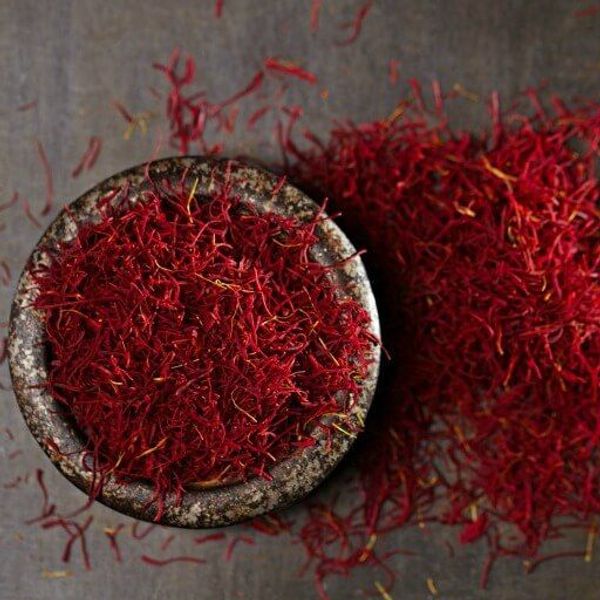
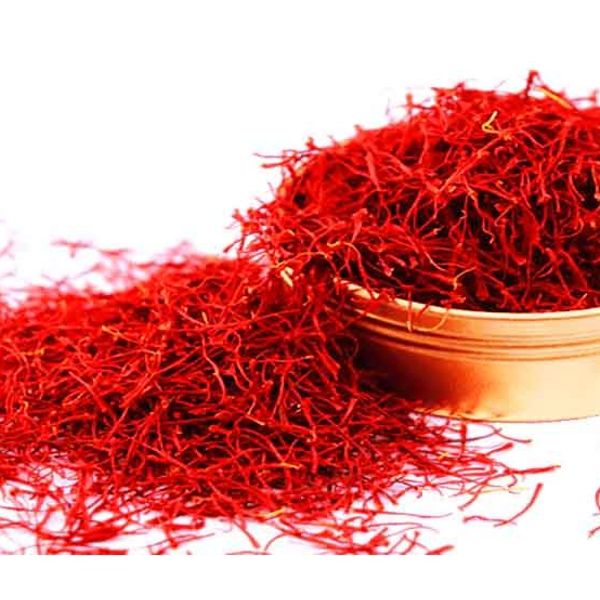
Saffron
Iran Saffron
Iran produces about 70 - 90% of the entire world production of saffron. Iran Saffron is seen as the king of the saffron species. Many historians believe that it was in this region that the cultivation of the purple Crocus sativus saffron flower first began.
Negin Saffron
Negin Saffron is the most expensive type of Saffron because it has the highest quality compared to other types. When three stigma threads are attached together we call it Negin. Negin Saffron has a long thread, like Mancha (Pushal) and at the same time, it has even more coloring strength than Sargol. Negin is what people call the precious stone on the pieces of jewelry in Farsi.
All Red Negin Saffron
1 Crocin (Coloring Strength) minimum 215-240
2 Safranal (flavor & smell) minimum 35
3 Picrocrocin (bitterness) minimum 80
4 Moisture under 7%
Sargol Saffron
Sargol Saffron consists only of Dark Red Stigma (thread) Tips. So. in other words all the white and orange parts are removed. This saffron is the second most expensive type of saffron after Negin Saffron. Sargol in Farsi means the top of the flower.
Their moisture level of All Red Saffron is under 8%. Iran’s climate is suitable for growing saffron. The Best saffron is Iranian saffron all over the world. Most of the saffron Iran Produces are from Kurdistan province, Kermanshah province, and Razavi Khorasan Province.
1 Crocin (Coloring Strength) minimum 205-225
2 Safranal (flavor & smell) minimum 35
3 Picrocrocin (bitterness) minimum 80
4 Moisture under 8%
Mancha Saffron
Mancha Saffron is the stigma part. Since in Pushal is not cut like Allred during production so the complete red-colored parts are maintained along with a little bit of the orange-colored threads. All the three stigma threads are attached like the Negin Saffron. Since it contains more yellow parts from the style of the plant, therefore, it has higher floral waste, about 5%. This type of coloring strength is lower than the All Red type. Their moisture level of Mancha Saffron is under 8%.
Momtaz Mancha Saffron
1 Crocin (Coloring Strength) minimum 200-220
2 Safranal (flavor & smell) minimum 30
3 Picrocrocin (bitterness) minimum 75
4 Moisture under 8%
Bunch Saffron Saffron
Bunch Saffron has different names, such as Dasteh Saffron or Dokhtar Pich Saffron (Dochtar Pitsch Saffron, or Dokhtar Saffron). Dasteh Saffron is the complete stigma (filament) of saffron in bundles. In other words, it contains the stigma with the whole style. It contains the red-colored parts as well as orange, yellow and white parts. Its coloring strength is relatively low compared to the Mancha and All Red types. Although the style of the saffron has a lower value compared to the red parts, many customers prefer to buy the whole thread rather than the red parts alone.
Bunch Saffron
1 Crocin (Coloring Strength) minimum 180-200
2 Safranal (flavor & smell) minimum 30
3 Picrocrocin (bitterness) minimum 75
4 Moisture under 8%
Powder Saffron Saffron
Saffron Powder is not a kind of saffron such as Negin or Pushal. It is a form of saffron, which producers make from grinding the saffron threads in the industrial scope. The final product color is slightly lighter than the thread itself. For example, if we produce saffron powder from Negin All Red, the final powder color is a little bit lighter than Negin itself. So. as a result the coloring strength is a little bit less. The reason why saffron powder has high demand is that it is much easier for producers and customers to measure it accurately. Also, it is much easier to use in preparing a dish as it mixes up with the ingredients and spices perfectly. Since it dissolves easily into foods and dishes. There will not be any visible threads of saffron in your finished dish but it adds a wonderful flavor and taste to it.
The Iranian saffron has a beautiful deep rich color, and a full flavor. Our Company has grown to become a professional and trusted manufacturer and supplier of dried fruits and nuts. Providing you with extremely professional support, we are expert in the way we ensure you the quality of our products
Saffron Powder is not a kind of saffron such as Negin or Pushal. It is a form of saffron, which producers make from grinding the saffron threads in the industrial scope. The final product color is slightly lighter than the thread itself. For example, if we produce saffron powder from Negin All Red, the final powder color is a little bit lighter than Negin itself. So. as a result the coloring strength is a little bit less.
The reason why saffron powder has high demand is that it is much easier for producers and customers to measure it accurately. Also, it is much easier to use in preparing a dish as it mixes up with the ingredients and spices perfectly. Since it dissolves easily into foods and dishes. There will not be any visible threads of saffron in your finished dish but it adds a wonderful flavor and taste to it.
Users can powder the saffron in small scales for daily use with mortar and pestle.
Mortar and pestle to grind saffron and turn into saffron powder
Iran produces about 70 - 90% of the entire world production of saffron. Iran Saffron is seen as the king of the saffron species. Many historians believe that it was in this region that the cultivation of the purple Crocus sativus saffron flower first began.
Negin Saffron
Negin Saffron is the most expensive type of Saffron because it has the highest quality compared to other types. When three stigma threads are attached together we call it Negin. Negin Saffron has a long thread, like Mancha (Pushal) and at the same time, it has even more coloring strength than Sargol. Negin is what people call the precious stone on the pieces of jewelry in Farsi.
All Red Negin Saffron
1 Crocin (Coloring Strength) minimum 215-240
2 Safranal (flavor & smell) minimum 35
3 Picrocrocin (bitterness) minimum 80
4 Moisture under 7%
Sargol Saffron
Sargol Saffron consists only of Dark Red Stigma (thread) Tips. So. in other words all the white and orange parts are removed. This saffron is the second most expensive type of saffron after Negin Saffron. Sargol in Farsi means the top of the flower.
Their moisture level of All Red Saffron is under 8%. Iran’s climate is suitable for growing saffron. The Best saffron is Iranian saffron all over the world. Most of the saffron Iran Produces are from Kurdistan province, Kermanshah province, and Razavi Khorasan Province.
1 Crocin (Coloring Strength) minimum 205-225
2 Safranal (flavor & smell) minimum 35
3 Picrocrocin (bitterness) minimum 80
4 Moisture under 8%
Mancha Saffron
Mancha Saffron is the stigma part. Since in Pushal is not cut like Allred during production so the complete red-colored parts are maintained along with a little bit of the orange-colored threads. All the three stigma threads are attached like the Negin Saffron. Since it contains more yellow parts from the style of the plant, therefore, it has higher floral waste, about 5%. This type of coloring strength is lower than the All Red type. Their moisture level of Mancha Saffron is under 8%.
Momtaz Mancha Saffron
1 Crocin (Coloring Strength) minimum 200-220
2 Safranal (flavor & smell) minimum 30
3 Picrocrocin (bitterness) minimum 75
4 Moisture under 8%
Bunch Saffron Saffron
Bunch Saffron has different names, such as Dasteh Saffron or Dokhtar Pich Saffron (Dochtar Pitsch Saffron, or Dokhtar Saffron). Dasteh Saffron is the complete stigma (filament) of saffron in bundles. In other words, it contains the stigma with the whole style. It contains the red-colored parts as well as orange, yellow and white parts. Its coloring strength is relatively low compared to the Mancha and All Red types. Although the style of the saffron has a lower value compared to the red parts, many customers prefer to buy the whole thread rather than the red parts alone.
Bunch Saffron
1 Crocin (Coloring Strength) minimum 180-200
2 Safranal (flavor & smell) minimum 30
3 Picrocrocin (bitterness) minimum 75
4 Moisture under 8%
Powder Saffron Saffron
Saffron Powder is not a kind of saffron such as Negin or Pushal. It is a form of saffron, which producers make from grinding the saffron threads in the industrial scope. The final product color is slightly lighter than the thread itself. For example, if we produce saffron powder from Negin All Red, the final powder color is a little bit lighter than Negin itself. So. as a result the coloring strength is a little bit less. The reason why saffron powder has high demand is that it is much easier for producers and customers to measure it accurately. Also, it is much easier to use in preparing a dish as it mixes up with the ingredients and spices perfectly. Since it dissolves easily into foods and dishes. There will not be any visible threads of saffron in your finished dish but it adds a wonderful flavor and taste to it.
The Iranian saffron has a beautiful deep rich color, and a full flavor. Our Company has grown to become a professional and trusted manufacturer and supplier of dried fruits and nuts. Providing you with extremely professional support, we are expert in the way we ensure you the quality of our products
Saffron Powder is not a kind of saffron such as Negin or Pushal. It is a form of saffron, which producers make from grinding the saffron threads in the industrial scope. The final product color is slightly lighter than the thread itself. For example, if we produce saffron powder from Negin All Red, the final powder color is a little bit lighter than Negin itself. So. as a result the coloring strength is a little bit less.
The reason why saffron powder has high demand is that it is much easier for producers and customers to measure it accurately. Also, it is much easier to use in preparing a dish as it mixes up with the ingredients and spices perfectly. Since it dissolves easily into foods and dishes. There will not be any visible threads of saffron in your finished dish but it adds a wonderful flavor and taste to it.
Users can powder the saffron in small scales for daily use with mortar and pestle.
Mortar and pestle to grind saffron and turn into saffron powder
Mesh Bags, As per customer's request
Stem, Ground, Powder, Whole
Gold, Red
Pushal, Negin Poushal, Negin, Sargol
Grade B, Grade A
+ 4


Dried Fig
Iranian Fig
Iranian dried Fig is an individual variety of Fig in the world because of its color and size, it is being cultivated in the center of Iran. Annually, there is a lot of consumption of Iranian Fig in the world in both dried and humid processed Fig
Iranian dried Fig is an individual variety of Fig in the world because of its color and size, it is being cultivated in the center of Iran. Annually, there is a lot of consumption of Iranian Fig in the world in both dried and humid processed Fig
Dried - Sun Dried, Frozen - IQF, Fresh, Dried, Frozen
Whole
Origin
이란
Production Capacity
11,000 /
Export Volume
7,000 /
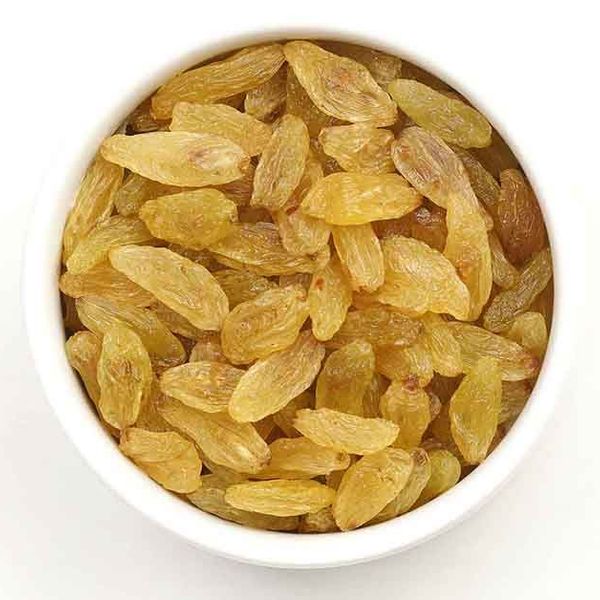
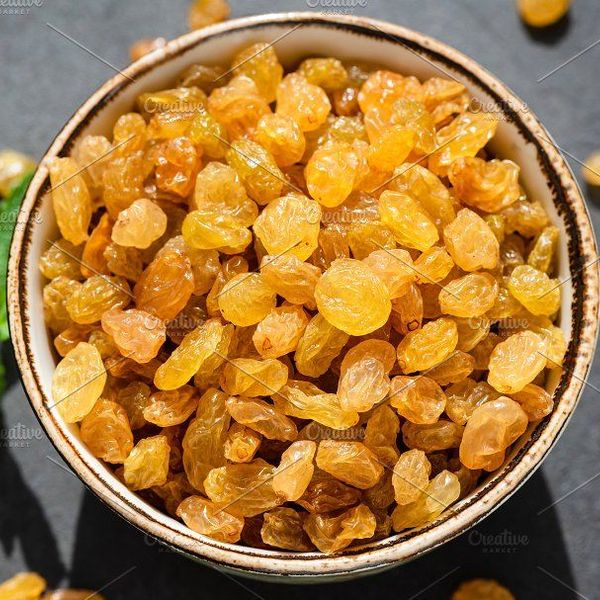
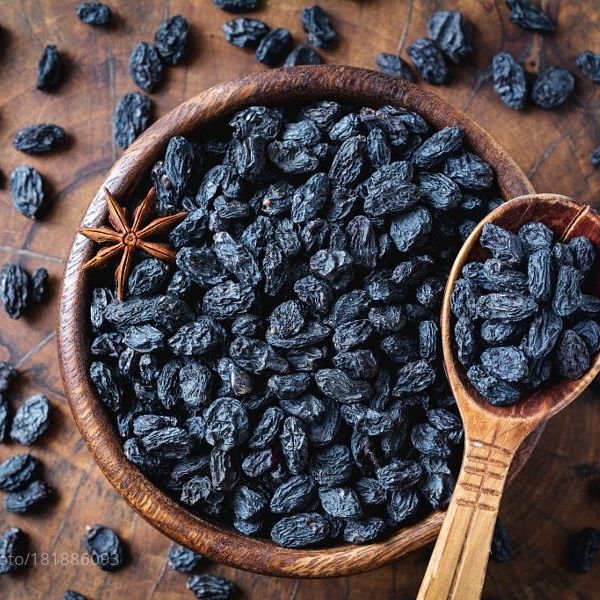
Raisin
The history of raisin: The raisin was discovered accidentally, many years before Christ. People ate grapes but did not know that if they were to dry the grape, it would become this useful and delicious dried fruit called the raisin. Historians claim that the Phoenicians and Armenians were the first nations to produce raisins. Phoenicians established vineyards in Spain and Greece that were fitting for cultivating raisins and the Armenians established their vineyards in Iran, Turkey and Iraq. The Greeks and Romans had a high demand for raisins and then other countries started to use raisins as well
Tub, Plastic Punnets, Mesh Bags, PP Bags, Carton Box
Conventional, GMO, Organic, Non-GMO
Kashmiri, Malayer, Golden Seedless, Flame Seedless, Thompson Seedless
A, AA, B, Sundried (WP)
Jumbo (<120 pcs/100 g), Medium (220-300 pcs/100 g), Small, Jumbo (<300 pcs/100 g)
+ 7
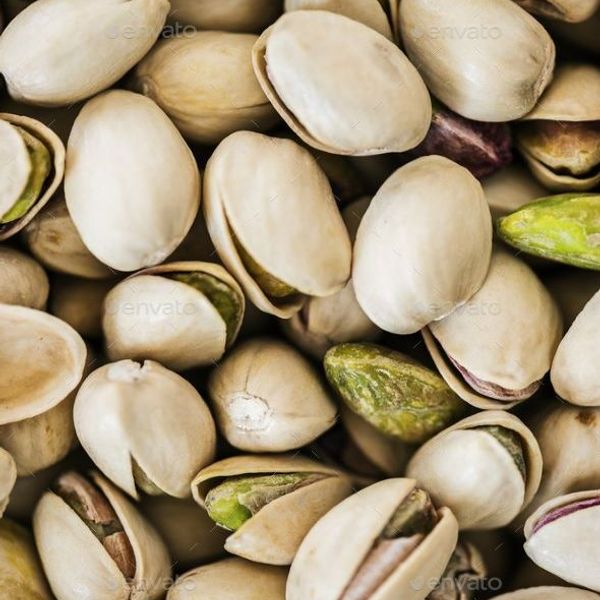
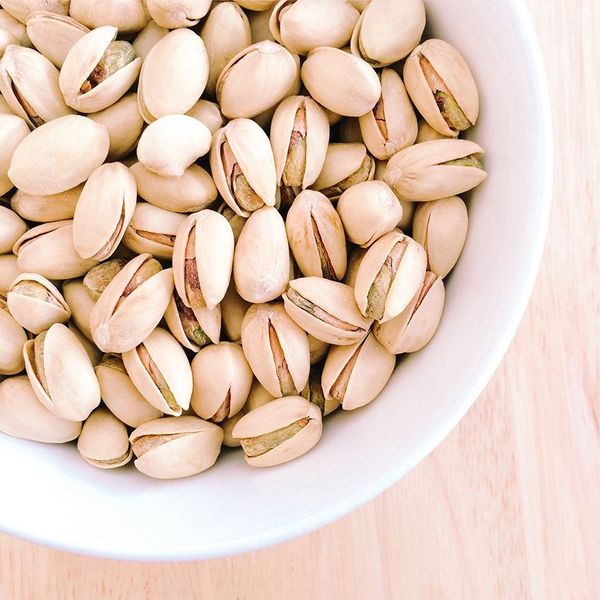
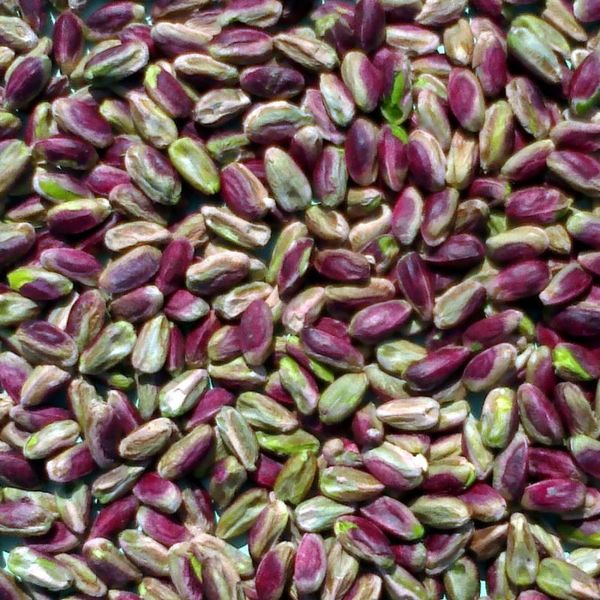
Pistachio
The pistachio (Pistacia vera), a member of the cashew family, is a small tree originating from Central Asia and the Middle East.
It’s the bright-green nut that makes everything look cheerier. In some countries, it is also known as the ‘smiling’ or ‘happy’ nut – indeed, when the hard casing splits, it can look like a smiling face. But this is a nut that offers more than good looks. It’s a nutritional powerhouse, and even a world champion!
Pistachio nuts are a healthy snack which are loved by people in various countries. Iran is the biggest pistachio producer in the world.
In 2017, world production of pistachios was 1.1 million tonnes, with Iran and the United States as leading producers, together accounting for 75% of the total (table). Secondary producers were China, Turkey and Syria
It’s the bright-green nut that makes everything look cheerier. In some countries, it is also known as the ‘smiling’ or ‘happy’ nut – indeed, when the hard casing splits, it can look like a smiling face. But this is a nut that offers more than good looks. It’s a nutritional powerhouse, and even a world champion!
Pistachio nuts are a healthy snack which are loved by people in various countries. Iran is the biggest pistachio producer in the world.
In 2017, world production of pistachios was 1.1 million tonnes, with Iran and the United States as leading producers, together accounting for 75% of the total (table). Secondary producers were China, Turkey and Syria
Grains, Peeled, Flour, Whole
Jumbo - Kallehghouchi, Irani, Kallehghouchi, 이란 피스타치오 - 아마드 아가에이
Conventional, Organic, Non-GMO
Dried, Salted, Roasted - Salted, Roasted, Raw
Origin
이란
+ 2
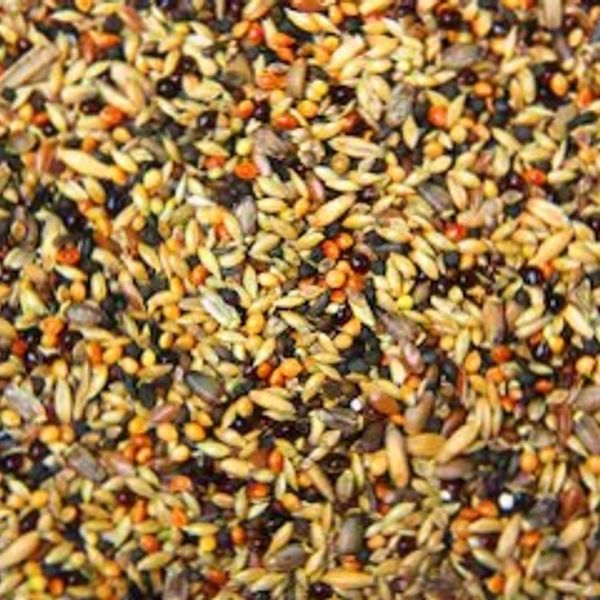
Canary Seed
Canary seed (Phalaris canariensis), or annual canary grass, is a major component of feed mixtures for caged and wild birds, a cool-season crop grown in Saskatchewan, and as the name would suggest, the crop originated in the Canary Islands. Canadian farmers produce up to 65% of the world's canary seed, so Canada is the largest producer and supplier of this seed in the world.
Conventional, Organic, Non-GMO
Dried, Raw
Ground, Whole
Origin
캐나다
Production Capacity
120 /
+ 1
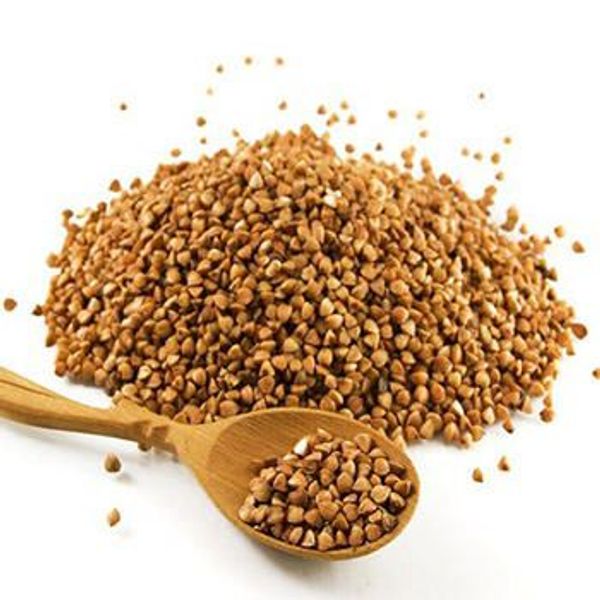
Buckwheat
Buckwheat is a type of special crops which has been growing in Canada since 1970. Manitoba is called buckwheat capital of Canada because it accounts about 70% of total production, but has recently shifted to Ontario and Quebec due to strong demand in Central Canada and eastern North America.
Unhulled, Hulled
Whole, Bran, Powder
For Food, For Feed
Organic, Non-GMO, Conventional
Bulk (Bulk in Container or Bulk in Vessel), As per customer's request
+ 4
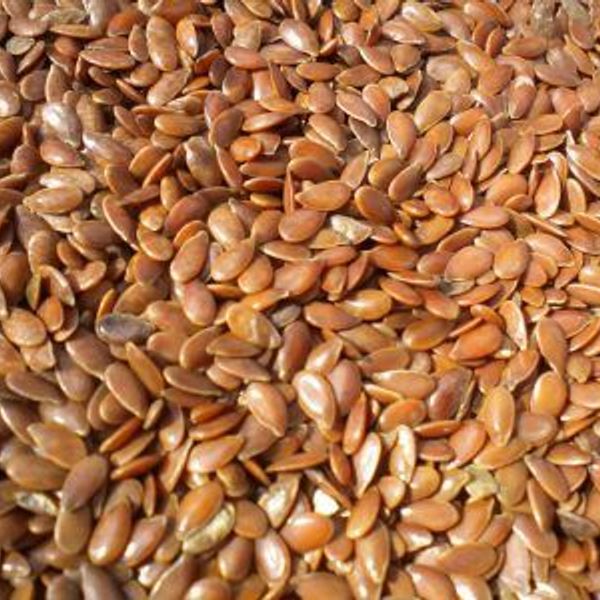
Flax Seeds
Flax (Linum usitatissimum), annual plant belonging to the family of the same name (Linaceae). Flax is sown and harvested much like a spring cereal crop and matures at the same time as wheat. Flax seed could be used as industrial, food and feed purposes. Although the place of origin of flax is unknown, it was likely in the Near East
Unhulled, Hulled
As per customer's request, Bulk in Container
Cold Milled, Dried, Raw
Conventional, Organic, Non-GMO
Whole
+ 4
Recommended suppliers for you
By clicking “Accept Cookies,” I agree to provide cookies for statistical and personalized preference purposes. To learn more about our cookies, please read our Privacy Policy.
/200x200/seller-logo/49/2f/9d/492f9d0edfc2542455535dfb8a5eeb0b7d44eb83/Mehsom_Logo.jpg)